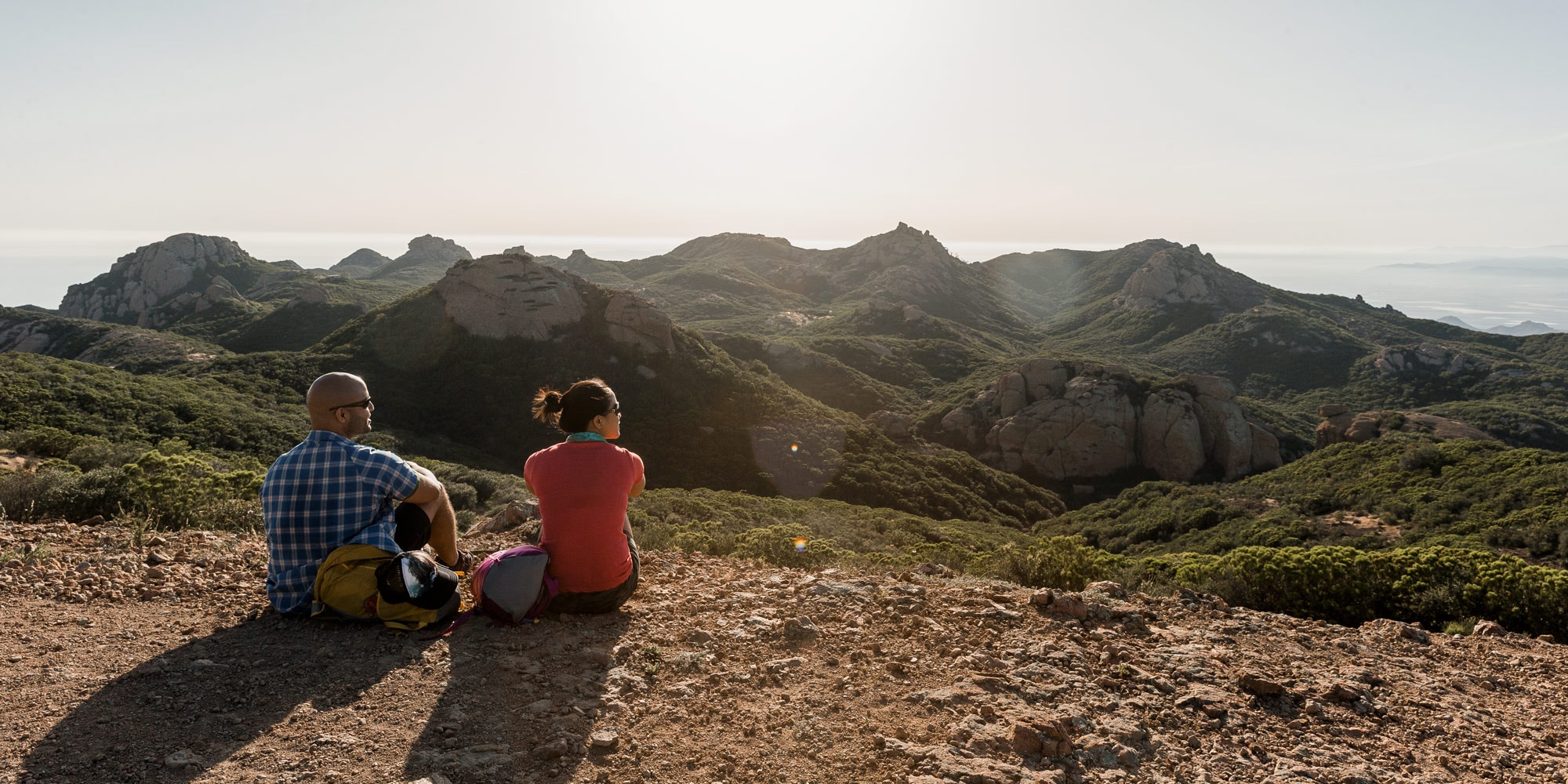During these challenging times of spending long hours in our homes and keeping our distance from others, hiking can offer a welcome respite of fresh air, exercise and a chance to clear our minds. Even cities taking the most strict measures for social distancing during the coronavirus pandemic acknowledge the benefits of getting outdoors:
“Spending time outside improves mood and well-being, and is particularly beneficial to children. Go for walks, go to the park and engage in other similar activities.”
That said, as the popularity of hiking has grown over recent years, well-known and easily accessible trails have been getting overrun. While it’s not hard to keep the recommended 6-foot distance from other hikers on a trail, it’s still much nicer to go where you aren’t surrounded by hordes trying to jostle for the same solitude and beautiful vistas you are.
If you’re looking to escape the teeming masses, follow these tips to improve your chances of finding crowd-free day hikes. If you’re venturing out to trails beyond your local parks, don’t forget to take the Ten Essentials with you, follow Leave No Trace principles, and let someone know where you plan to go. If you’re new to hiking, read our article for some helpful tips and guidelines.
1. Right Hike, ‘Wrong Time’
The truth is you can usually find some degree of solitude on most hikes. You just have to go at the “wrong” time. Early (like, it’s still dark out) mornings, late afternoons and midweek are all typically lower traffic times on popular hiking trails.
If you’re just heading to a park or trail close to home, get creative with your schedule. Do a short hike before beginning your work day or plan a midafternoon “lunch” break.
Casual hikers are also easily dissuaded by weather. If the forecast calls for rain, throw on your jacket and head out. The odds are you’ll be one of only a few hardy souls enjoying the quiet pitter patter of raindrops. Just make sure you are prepared for inclement weather and have the right gear (read our tips for hiking in the rain).
2. Choose Second Best
The double-edged sword of the internet means there’s a ton of information out there accessible to you—and everyone else. The trick is to know how to use it to your advantage. Don’t just go to the best-sounding and highest-rated trails; take some time to find locations that fly under the radar. They might not be quite as spectacular—and sometimes might be harder—but hopefully the quiet of the trail will make up the difference.
Online hiking trail databases like the Hiking Project allow users to rate trails and upload trip reports. The trick is to look for trails that have a smaller number of ratings, no facilities like restrooms or developed parking lots, and ones that are a little farther away from populated areas. Trails that don’t allow other types of recreation like fishing or biking will draw fewer people, as will trails that don’t have an obvious payoff like a spectacular view or impressive waterfall.
Online hiking groups on social media sites and forums are full of information. Join ones that are local to you or the area you’re interested in and browse the archives. People often ask for trail recommendations; read through older posts to find these. You can also see what trails are more popular based on people’s posts and pictures, and you can choose to avoid those spots.
3. Ask Local Experts
No one knows the trails better than rangers. Call up the National Park Service or Forest Service rangers for a specific area and ask for trail info. Rangers are often more than happy to share, and even if they don’t have a specific hike to recommend, they can provide valuable information about trail access, water sources and weather conditions.
Don’t forget to reach out to experienced hikers you may know, or ask your outdoorsy friends and colleagues if they have recommendations. Word of mouth is a great way to learn about favorite lesser-known areas.
4. Go Vintage
Guidebooks and hiking books are other great resources for finding less popular trails. Check libraries and used bookstores for older books about the areas you’re interested in. These older books often have hidden gems that may have fallen off the radar. Compare the provided information to current topo maps to make sure there haven’t been major reroutes, and call the relevant land manager to make sure there’s still road access.
5. Go Farther
For most day hikers, three to five miles one way is a good day. If you’re comfortable going a little farther, you can lose the crowds by simply out-hiking them. This is particularly true in places like national parks, where people are trying to fit more into a day and spending less time on a single trail. Budget a little more time to explore one location and it could pay dividends.
If walking a farther distance isn’t possible, driving more can be a good option. The longer it takes to get to a trailhead from a central hub or population center, the less likely it is to be crowded. That said, even far away yet well-known locations can be enticing enough to fill parking lots. That’s where planning for off-hours helps.
6. Go Harder
Harder trails with more elevation gain often dissuade many casual hikers. If you’re able to confidently tackle these trails, you have a lot more options. If you’re uncertain about a trail’s difficulty, compare its key stats, like mileage and elevation gain, to hikes you’ve done before. A hike that gains 2,000 feet over two miles is going to be much more challenging than one that gains 2,000 feet over six miles. Trail descriptions should also alert you to other factors like rocky footing or exposure. Don’t do anything you’re not comfortable with, but you might find a little challenge to be rewarding in more ways than one.
